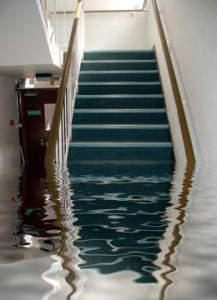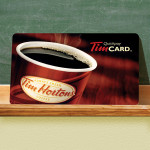Water back-up is one of the more confusing coverages in homeowners’ policy. It involves more than back-up, as overflow is mentioned in some of the coverages. But what is a back-up, and how is it different from an overflow or a discharge? All these things come in to play when there is a water loss, and what causes the back-up or overflow may make a difference in whether or not there is coverage.
First let’s look at definitions. A back-up is an accumulation caused by a stoppage in the flow; something prevents the water from continuing down its path, so it is forced to reverse direction and go back the other way. A collapsed drain pipe can cause a back-up; water can no longer proceed down its normal course and is forced to change direction. A blockage can cause a back-up; the blockage prevents the water from going forward, and the water has to reverse itself.
An overflow is when the water exceeds its boundaries; the space is filled to capacity and water then spreads beyond its limits. A tub left running creates an overflow. The tub can no longer hold the water running into it, so the water overflows onto the floor and surrounding area.
A discharge is a flowing or issuing out; water coming from a pipe. A leaking pipe discharges water from the hole in the pipe; it is not a back-up or an overflow, it is simply water issuing from a pipe at the wrong spot.
Discharge or Overflow?
The ISO HO 00 03 provides coverage for water damage that is the result of a discharge or overflow of a plumbing, heating, air conditioning, or household appliance if it is on the residence premises. This covers pipes that leak behind walls, floors, or ceilings; washing machines and dishwashers that overflow, toilets that overflow, or storm drains off premises that overflow due to high rains or floods. It is important to note that a sump, sump pump or related equipment, or a roof drain, gutter or downspout or similar equipment is not considered a plumbing system or household appliance. A discharge or overflow caused by a storm drain, water, steam, or sewer pipe is covered as well if it is off the premises.
The coverage is for repair of the damaged property—the walls, floors, tiling, and carpet, areas that got saturated and need to be repaired or replaced. Even the tear out of a wall, for example, to get to a leaking pipe is covered. What is not covered is the leaking pipe itself; a pipe leak is often caused by simple wear and tear or age of the system, and that is a maintenance item. However, even if the insured is hanging a picture and pokes a hole in a brand new home and new pipes, the damage to the pipe is not covered. The exclusion for damage to the item causing the loss is all encompassing, and has no exceptions.
The policy specifically excludes water that overflows from sumps, sump pumps, or related equipment or water that backs-up through sewers or drains. However this is where a lot of losses occur; sump pumps may fail or be unable to handle the flow of water during a severe storm or flood, and sewers or drains may back-up due to a stoppage in the flow. Overflows are excluded for sumps because that is a common cause of loss; the sump cannot handle the volume of water it receives. For example, if the drain backs up and overflows because of heavy rainstorms, that is not covered under the policy.
To provide coverage for this occurrence there is the Water Back-up and Sump Discharge or Overflow endorsement, HO 04 95. This provides $5,000 of coverage for back up through a sewer or drain or overflow or discharge of a sump, sump pump or related equipment, even if the equipment suffers a mechanical breakdown. For example, the sump pump motor burns out and the basement floods; there is $5,000 of coverage for that damage. The coverage is for water or waterborne material, so coverage is provided for damage caused by items floating in the water. This coverage does not, however, increase the limits of liability for coverages A, B, C, or D in the homeowners’ policy. This takes the problem of defining back-up or overflow out of the equation of certain losses, since the endorsement provides the coverage that is excluded in the main policy itself.
Water, whether it be from pipes, sewers, sumps, or floods, is one of the bigger issues in homeowners policies. There is a lot of confusion surrounding what is and is not covered. Once you consider the definition of the terms, you are on your way to understanding the coverage. As always, policy language rules the day.
Courtesy of Property Casualty 360



